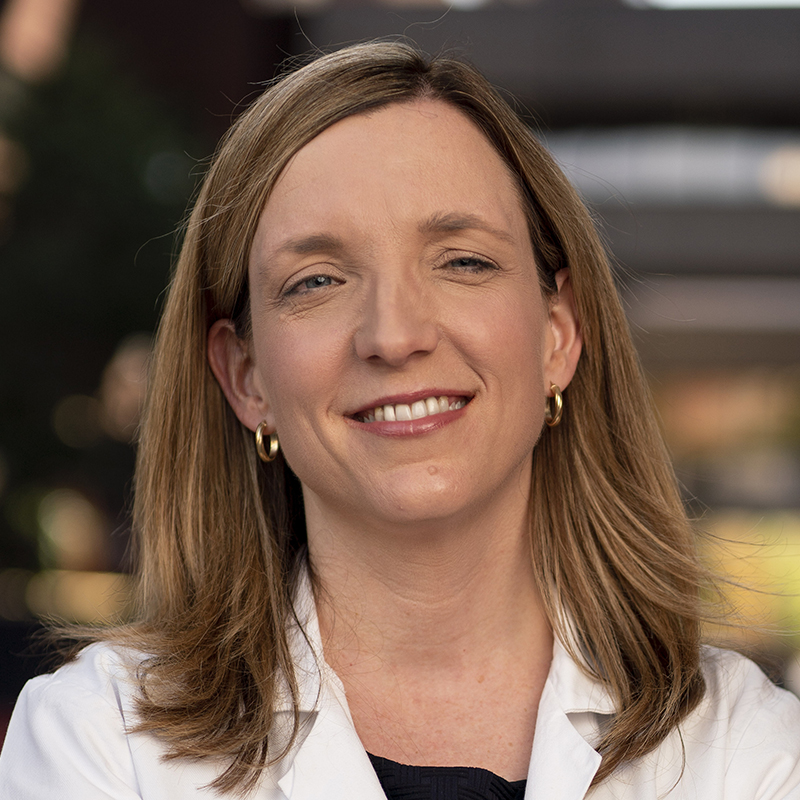Lori Jordan, M.D., director of the Pediatric Stroke Program at Monroe Carell Jr. Children’s Hospital at Vanderbilt and secretary-treasurer of both the Child Neurology Society and the International Pediatric Stroke Organization, sat down with Discoveries to discuss recent advancements and initiatives in the field of child neurology.
Discoveries: The joint International Child Neurology Congress and Child Neurology Society Meeting is about to be held virtually this year. What does the conference and community mean to you?
Jordan: These meetings are so important because they let us interact with child neurologists from around the country and the world to get ideas about new research and care practices, and to address questions that we all have about how to take better care of kids.
This particular meeting is special because it’s a partnership of the International Child Neurology Association and the Child Neurology Society – it will bring together child neurologists from around the globe to learn and to advance the care of children with neurological problems.
Advancements in Child Neurology
Discoveries: You’ve been a child neurologist for about 20 years – what are some of the research areas that are pushing the field forward today?
Jordan: There is such a diversity – it’s really hard to pick even just a few. Neurogenetics is really fast-moving and exciting. Knowledge has grown by leaps and bounds in that field; this has provided a lot of clarity for neurologic conditions that we knew were genetic but didn’t know how to test for, and also for conditions that we had a sense were genetic but didn’t fully understand what was causing them.
Neurogenetics is also a really important area when we think about the information families want from us: “Why did this happen?” “Will it happen to the next child that I have?” “Are other children in my family at risk?” It can also inform treatments. If a patient has a specific genetic mutation, different treatments may work better than others. We see that in a few epilepsy disorders already.
Pediatric neuromuscular disease is another area that has seen many advances in the last five years, including new treatments for children with Duchenne muscular dystrophy and for children with spinal muscular atrophy. We’ve also learned a lot over the last few years about traumatic brain injury, which is of particular importance as we consider the consequences of concussions in children and athletes.
“Neurogenetics is also a really important area when we think about the information families want from us: “Why did this happen?” “Will it happen to the next child that I have?” “Are other children in my family at risk?”
New Understanding of Pediatric Stroke
Discoveries: For your specific area of pediatric stroke, what are some of the exciting advancements?
Jordan: On a national level, there is now a consensus that every hospital should have a plan for a child they suspect is having a stroke. Usually, when a child comes in with headache and not feeling themselves, the first thing many doctors will consider is whether the child has a brain tumor, whether or not to urgently image the child’s brain. Strokes are about as common as brain tumors in children.
My team recently published on the success of pediatric stroke protocol implementation at Vanderbilt. In adults with stroke, it is clear that having a Brain Attack Team improves outcomes. We think the same will be true for children.
In adult stroke, advances in neuroimaging, particularly perfusion imaging, have dramatically expanded the time window to treat patients with acute stroke. We hope that those kinds of imaging advances can also be brought to bear for children. The window for administration of a clot-busting drug or use of a clot-retrieving device has expanded to up to 24 hours in specific adults with stroke, largely due to the strength of imaging. Again, we hope the same will be true for children but more data are needed.
“When a child comes in with headache and not feeling themselves, the first thing many doctors will consider is whether the child has a brain tumor…Strokes are about as common as brain tumors in children.”
Global Challenges
Discoveries: The global burden of neurological conditions has decreased significantly over the last few decades, but in some regions the burden remains high. What accounts for this disparity and how should it be addressed?
Jordan: There are some areas of the world that train fewer child neurologists and therefore have less access to care. This is in part because some regions lack child neurology residency training programs. It’s key to train physicians locally because we know it’s common for physicians to practice within the region where they train. A big initiative has been to help regions with these workforce challenges to develop residency training programs.
In addition to training child neurologists, it’s important to train other healthcare workers in the basics of neurological care. As one example, Edwin Trevathan, M.D., head of the Vanderbilt Global Health Institute, studies the childhood epilepsy treatment gap in low- and middle-income regions of Sub-saharan Africa. He’s fostered several initiatives to support the training of community healthcare workers in Northern Nigeria in epilepsy care and other neurologic conditions.
“Having diversity in our workforce is important not only as we seek to understand the medical issues, but also the cultural issues that go along with having a child with neurological difficulties.”
Importance of Diversity
Discoveries: You currently serve as the associate program director of the Vanderbilt Child Neurology Residency Program and previously served as program director. What are your thoughts about the state of diversity in the field of child neurology?
Jordan: It’s an exciting time. Historically, child neurology, like many fields of medicine, was a fairly male-dominated field. Now, our membership in the society is 50 percent male and 50 percent female, and our trainees are more than 75 percent female. I’m thrilled that we’ve been able to attract female medical students and physicians to our field, and that it reflects changes in medicine in general.
We want to encourage the best and brightest medical students to become child neurologists. We also want to recruit a diverse group of trainees. One driving force is that our patient population is incredibly diverse – many languages are spoken in our clinic. Having diversity in our workforce is important not only as we seek to understand the medical issues, but also the cultural issues that go along with having a child with neurological difficulties.





